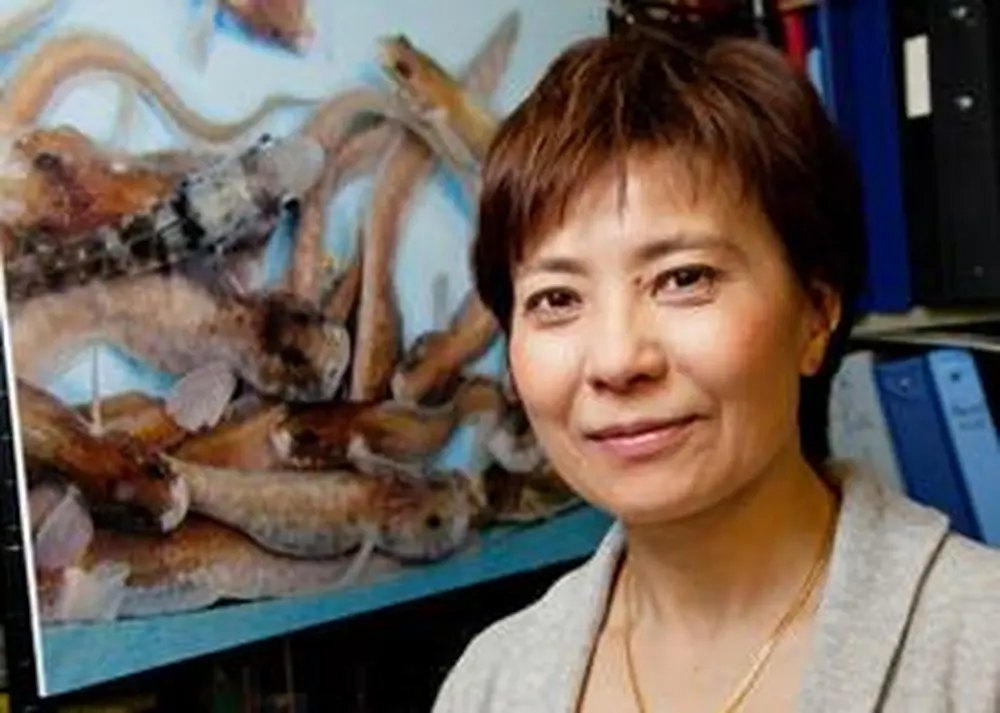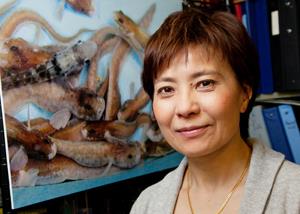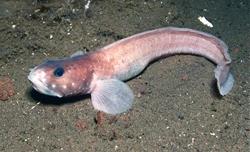

Christina Cheng stands on one of the coldest spots on Earth as she watches a large cylindrical trap being lowered through a hole in 20-foot-thick ice. She’s inside a heated fish hut in Antarctica, but far below her feet is the coldest water on the planet, with a nearly constant temperature of -1.9° C, or 28° F. Cheng, an LAS professor of animal biology, is attempting to capture a curious creature known as the eelpout, a slimy, smelly fish about 6 inches long and shaped like an eel.
The eelpout is so foul that large predators often spit it out, but biologists find it quite appealing. Because the eelpout has a unique genetic makeup, Cheng’s team uses it to unlock genetic secrets. Most recently, she has come up with compelling evidence showing how the eelpout may have developed its ability to withstand freezing temperatures after a certain gene duplicated itself millions of years ago—an important finding in evolutionary science.
Researchers have known for over two decades that the eelpout and other Antarctic fishes have antifreeze proteins that prevent their blood from freezing over. But where did these proteins come from?
Illinois biologists have a theory. They have shown, for the first time, how a gene in the eelpout can develop a new function—the antifreeze ability—through what is called “escape from adaptive conflict.” This finding could very well become a textbook case.
Solving the genetic mystery of the eelpout began in the early 2000s, when the human genome was first published. That’s when Cheng found out that a human protein enzyme known as sialic acid synthase, or SAS, was strangely similar in sequence to the eelpout’s antifreeze protein. This hinted that the antifreeze protein might have evolved from an SAS protein in the fish.
Cheng’s team theorizes that the SAS protein has had two functions all along. It has a primary function, which is performed inside the cell, creating acidic sugars. But it also has an accidental, untapped function—the ability to bind to ice crystals.
“The SAS protein looks like an asymmetric dumbbell,” Cheng says. “It has a big head and small tail. We isolated the small tail and found that it does have this minor function. It can interact with ice. This ice-binding ability likely interfered with the enzyme function, creating the functional conflict.”

When the SAS gene duplicated, the conflict was resolved. As water got cold, the latent antifreeze ability in one daughter gene might have been capitalized on and refined to become the antifreeze protein in the Antarctic eelpout today.
But a big question remained. SAS does its work inside a human or fish cell, while the eelpout antifreeze protein, known as AFP III, is secreted from cells into the bloodstream. There, it binds to ice crystals, stopping them from growing and preventing the fish’s blood from freezing. If AFP III evolved from the SAS protein, how did it manage to leave the cell and enter the bloodstream?
Cheng’s team has determined how this could have happened. They have shown that the emerging antifreeze gene acquired a particular “signal peptide” from another part of the SAS gene, which enabled the new protein to be exported into the bloodstream.
“Gene duplication happens all the time,” Cheng says. “Typically, when a gene duplicates, one copy is redundant and eventually degenerates. But on rare occasions, you could have a daughter copy that develops an entirely different function.”
The evolution of an antifreeze protein from the SAS protein is one such rare occasion.
“The nice thing is that fish antifreeze proteins are relatively recent creations,” she says. “They appeared within several million to approximately 15 million years ago, and that’s recent in evolutionary time. This makes it much more feasible to trace the pathway by which they evolved.”


